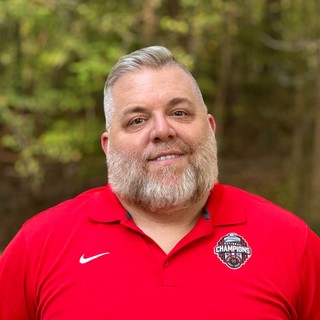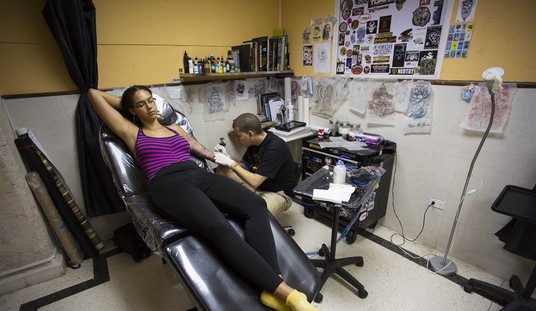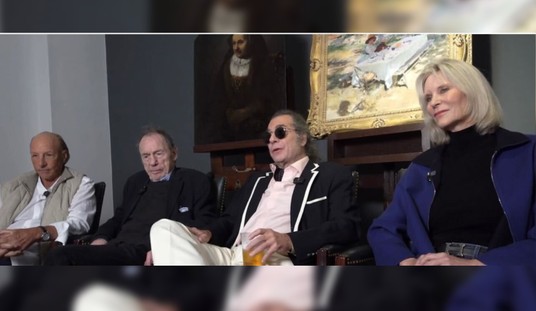Over the last few weeks we’ve looked at how Disney and its productions reflected, and sometimes influenced, the times. We’ve seen how Disney mirrored the can-do spirit of the ’30s, how the studio overcame the challenges of World War II in the ’40s, and how Disney changed with the times in the ’50s.
By the time the 1960s rolled around, Walt Disney appeared to have done it all. He had elevated the cartoon from an opening-act short to a feature-film art form. He had conquered live-action movies and embraced television, and he even revolutionized the theme-park experience. But Walt wasn’t done — in fact, it looks like he saved his most radical and powerful ideas for the last years of his life. And here are seven examples to prove it.
7. Walt Disney’s Wonderful World of Color (1961-1969)
After a seven season run for Disneyland on ABC, Walt wanted to explore different options. His greatest desire was to broadcast a show in color. Even though ABC had broadcast the show in black and white, Walt insisted on filming most of the segments in full color because he believed color would add long-term value to his productions. Rival network NBC had begun to promote color series heavily since parent company RCA made color television sets, and, after a brilliant sales pitch from Walt, the network bit.
Walt Disney’s Wonderful World of Color ran for eight seasons before undergoing a retooling and title change. During those seasons, Walt took advantage of the new and exciting world of color programming when few producers were willing to branch out, especially in the earlier years. Once again, Walt willingly blazed a trail, and once again his pioneering spirit paid off.
6. Presidential Medal of Freedom (1964)
On September 14, 1964, President Lyndon B. Johnson presented Walt Disney with the Presidential Medal of Freedom. The award in and of itself wasn’t so radical, but Walt infused it with a unique – and impish – political tone in an election year.
The president was in the midst of a hard-fought election campaign against Arizona Senator Barry Goldwater. Walt had undergone a political transformation over the years, moving from the socialist influence of his father Elias to a full-blown conservatism resulting in his support for Ronald Reagan’s gubernatorial campaign.
Walt decided to make a quiet political statement at the ceremony, much to LBJ’s dismay. As Jim Korkis writes:
Walt had a small gold button stud that had the letter “G” and the number “64″ (signifying Goldwater in 1964) that would be under his left lapel and clearly visible only if he flipped it. He also asked for a much larger button clearly declaring “Vote for Goldwater,” so if anyone complained about his wearing the smaller pin, Walt would flash the larger button and ask, “Would you prefer if I wear this one instead?”
This incident demonstrates both Walt’s firm political migration from left to right, as well as his willingness to rock the boat when necessary. Not too shabby for a man in his sixties.
5. Audio Animatronics (1963)
For years, Walt liked to tinker with things. On one trip to New Orleans, he bought a mechanical bird, and once he arrived home in California he had some studio technicians take it apart to see what made it tick. This led him and some of his team to develop a mechanical dancing man based on a routine by Buddy Ebsen. For a few years after that, he sat these ideas aside.
When two-dimensional animation or still 3-D figures just wouldn’t do, Walt needed to find a new way to tell the stories he wanted to tell at Disneyland. So he went back to the mechanical bird and the dancing man, and his team developed a new technology they called Audio Animatronics.
The innovative new system made its debut with the Enchanted Tiki Room at Disneyland, and the company perfected the technology at the 1964-65 New York World’s Fair – including in a couple of attractions we’ll look at later. Today, countless Audio Animatronic figures work tirelessly throughout the Disney parks.
Walt and his team of artisans and technicians created an entirely new way of telling their stories, and the effect of that new method still packs a punch today.
4. The Carousel of Progress (1964)
The 1964-65 World’s Fair centered on the theme of progress, and nobody epitomized progress like General Electric and Disney. The two companies teamed up to create one of the fair’s most memorable exhibits, an attraction that reflected Walt’s faith in the future to a T.
The Carousel of Progress looked back at how electricity changed American lives over the years, and even envisioned a future where more exciting changes would take place. With its exuberant Sherman brothers theme song announcing that “There’s a Great Big Beautiful Tomorrow” just around the corner, guests couldn’t help but believe that the future was wide open with possibilities.
Walt and the Imagineers even devised the most innovative staging – a sort of reverse theater-in-the-round in which the audience rotated past each Audio Animatronic tableau. The Carousel of Progress demonstrated what I call Walt’s optimistic futurism in a truly unique and memorable way.
3. Great Moments with Mr. Lincoln (1964)
One of the exhibits Disney worked on for the 1964-65 World’s Fair in New York City utilized a new Disney technology to tell a powerful story and express a love for America like no other attraction could.
Fair director Robert Moses connected the state of Illinois with Disney when Walt showed Moses the prototype for a figure of Abraham Lincoln using the company’s new Audio Animatronics technology to make the 16th president come to life. Moses found himself so taken aback by the figure that he vowed he wouldn’t open the fair without Mr. Lincoln.
The Great Moments with Mr. Lincoln exhibit had its problems in the final stages of preparation, but when Lincoln began to perform well, the effect was magical. The attraction turned into one of the fair’s most talked-about events, and its unabashedly patriotic message resonated with guests. One comment card stated that the presentation “should be shown to everyone throughout the world to show the meaning of freedom and liberty.”
The patriotic message of Great Moments with Mr. Lincoln carried over when the attraction moved to Disneyland and its spirit spread to attractions like the Hall of Presidents at Walt Disney World’s Magic Kingdom and the American Adventure at Epcot, as well as entire park lands like Liberty Square in Florida.
On the edge of a time when a generation of Americans began to question their loyalty to their home country, Walt Disney kept patriotism front and center. It’s a tradition the company keeps alive today, as the American parks demonstrate a genuine love for America in attractions, parades, fireworks shows, special tributes to veterans, and especially on patriotic holidays.
2. The EPCOT Film (1966)
In his last filmed appearance, Walt Disney put forth a bold vision for his Florida Project – or what we now know as Walt Disney World. In this film, Walt, with writing help from the erstwhile Marty Sklar, laid out his grand plans for the Florida land as much more than a theme park. Walt wanted to build a futuristic city and an experimental industrial park alongside the attractions and hotels on the 27,000-plus acres.
In the EPCOT film, Walt shared his bold ideas for an Experimental Prototype Community of Tomorrow (EPCOT). He believed that careful planning and technological innovation could cure the ills of the urban centers of the day. As he said in the film:
How do we start answering this great challenge? Well, we’re convinced we must start with the public need. And the need is not just for curing the old ills of old cities. We think the need is for starting from scratch on virgin land and building a special kind of new community. So that’s what EPCOT is: an Experimental Prototype Community that will always be in the state of becoming. It will never cease to be a living blueprint of the future where people actually live a life they can’t find anyplace else in the world.
This city of the future included a climate-controlled central core, vast areas of green space, and pedestrian-friendly suburban enclaves. Sure, the whole thing seemed like a crazy pipe dream, but Walt sold the concept in his inimitable fashion.
Possibly the most fascinating feature of the EPCOT concept – one that set Walt apart from other utopian dreamers and planners – was that it relied on capitalism rather than communitarianism to achieve a better world.
EPCOT will take its cue from the new ideas and new technologies that are now emerging from the creative centers of American industry. It will be a community of tomorrow that will never be completed, but will always be introducing, and testing, and demonstrating new materials and new systems. And EPCOT will always be a showcase to the world of the ingenuity and imagination of American free enterprise.
Walt didn’t live to see his dream fulfilled – in fact, Roy Disney, along with other company executives and the Imagineers, scuttled the futuristic city idea pretty quickly. But Walt’s EPCOT concepts live on at Walt Disney World. From the cutting-edge technologies backstage to the new ideas on display throughout the parks to the Epcot theme park itself to the town of Celebration just south of the property, Disney has managed to make Walt’s dream a reality in a number of creative ways.
1. Walt Disney World (1971)
Is it cheating to count Walt Disney World as one of Walt’s most radical ideas from the ’60s, since it opened nearly five years after his death – and almost two years into the ’70s? Does it matter? Because the ultimate theme park and resort experience in the heart of Central Florida so clearly reflects the radical and revolutionary ideas of its creator.
Completely immersive theme parks? Resorts that help guests lose themselves in atmosphere? All of these are experiences that Walt and his studio perfected during decades of moviemaking and the development of Disneyland.
Tapping corporations from America and beyond to sponsor attractions and show off cutting-edge products and concepts? The Imagineers borrowed Walt’s idea from Disneyland and added his dreams for corporate involvement in the EPCOT project.
That vast expanse of land? Why, that’s Walt’s “blessing of size.” Walt and his team’s clever spy game (almost literally – attorney Paul Helliwell served for years in the OSS, the forerunner to the CIA, years before helping Disney) involving the acquisition of the land for the Florida Project makes for a great, true story that the master storyteller himself helped write.
Walt also wanted that huge amount of land to control the immediate area surrounding his vacation kingdom, and he wanted the company to be able to maintain the land free of local government control. Both concerns led to some innovative maneuvering on the part of the company – a legislative package that began before Walt’s death and allowed the Walt Disney World property to have its own governing authority and an expansion of the idea of the berm that borders Disneyland.
Both Walt and Roy Disney sought to maintain the natural beauty of much of the Florida land even in the midst of heavy development, so the company devised some unique environmental ideas, such as drainage canals that look like natural creeks and tracts of land set aside to remain undeveloped.
Walt did pass away before his greatest dream could see reality, but Walt Disney World revolutionized more than entertainment. The Florida Project ushered in new ideas of corporate partnership, stewardship, and creativity, none of which would have come to fruition without the radical ideas Walt espoused.









Join the conversation as a VIP Member